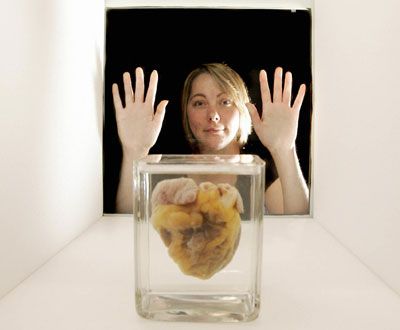
Heart transplant patient Jennifer Sutton admires her old heart at the Wellcome Collection's Heart Exhibition in London. Most of us will never see our own internal organs, but these pictures will give you an idea of what they look like.
Advertisement

The human body is made of many organs that work together via the circulatory, digestive, endocrine, excretory, nervous, respiratory and reproduction systems. The skin, pictured here, is actually the largest organ.

The second largest organ is the liver, which is an essential organ that plays a major role in metabolism, detoxification and digestion. See where the liver is located on the next page.
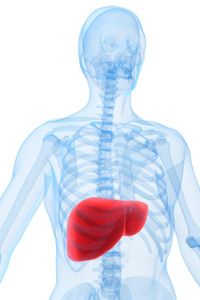
As part of the digestive system, the liver is located to the right of the stomach and overlies the gallbladder. The organ on the next page is the third largest in the human body.
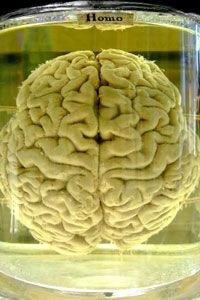
The third largest organ in the human body is the brain, which weighs a little less than 3 pounds in adults. The brain regulates breathing, body temperature and allows you to think, speak, imagine and experience emotions.
Advertisement
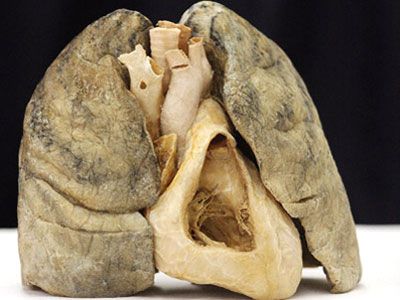
After the brain, the lungs are the fourth largest organ. Here a smoker's dissected heart (center) with the lungs surrounding it, showing black spots from tar. The main function of the lungs is to transfer oxygen to the bloodstream. Learn more about the heart, next.

The heart is part of the circulatory system and works with the lungs to pump blood. The average human heart beats 72 times per minute and is about the size of your fist.
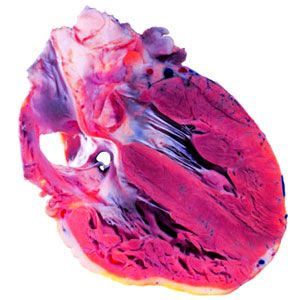
This heart cross-section shows the center septum that divides the two halves of the heart. The aorta and pulmonary artery are at the top in white.
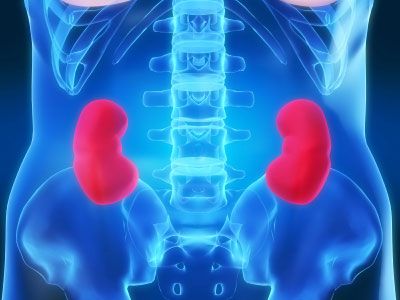
The next largest organs are the kidneys, which are bean-shaped and located in the abdominal cavity. They maintain water volume and balance, as well as regulate blood composition. See a photograph of a kidney next.
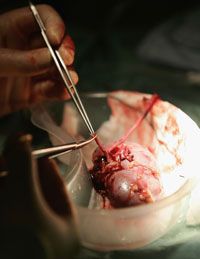
A donated kidney from a live donor is flushed in preparation for an organ transplant surgery. Kidneys are essential in the urinary system. Take a look inside a kidney next.
Advertisement
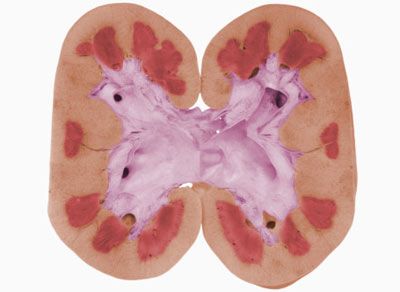
In this cross-section of a human kidney, the medullas -- the part of the kidney that controls the amount of salt and water in your urine -- are red. The ureter is in the middle, which connects to the bladder. The next organ sits on top of the kidneys.
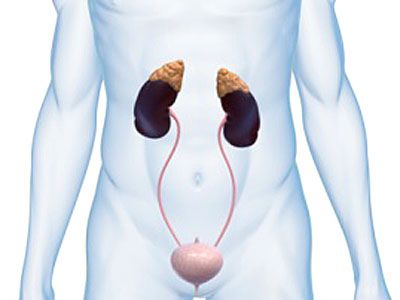
Sitting on top of the kidneys are the adrenal organs or glands (pictured here in gold). As part of the endocrine system, they release hormones in response to stress, including cortisol and adrenaline. The bladder -- pictured here in pink -- takes urine from the kidneys. The next organ is part of the immune system.
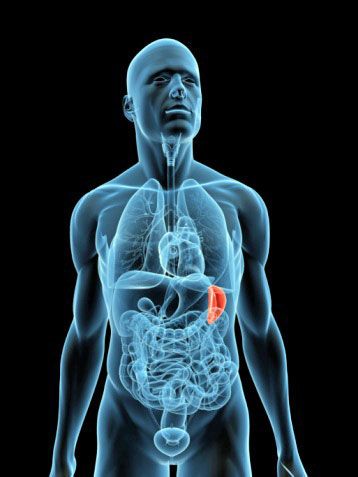
The spleen is a small organ (about four inches, or 10.16 centimeters, in length), and it's part of the immune system. It is located in the top of the abdomen, where it removes and filters red blood cells. Studies show that people who have had their spleens removed have increased risk for infection from bacteria. The next organ might surprise you.
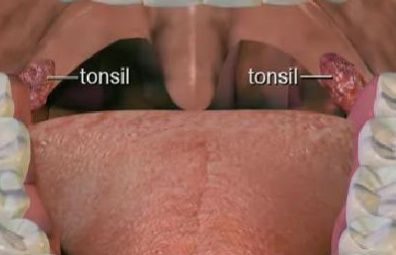
Tonsils are also organs in the immune system. They are located on the back sides of the throat and filter out bacteria, viruses and allergens. Tonsillitis occurs when the tonsils are fighting off germs.
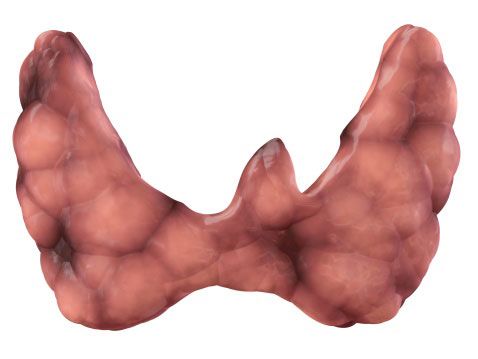
Also located near the throat, under the Adam's apple, is the thyroid gland. As part of the endocrine system, it controls hormone sensitivity and how quickly the body uses energy. It has a unique butterfly shape and can increase in size during pregnancy. See what other organ is in your throat next.
Advertisement
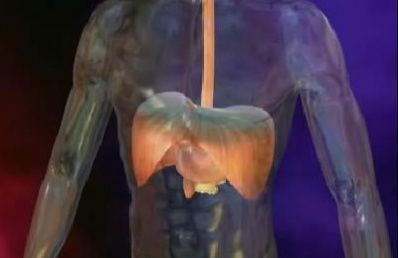
The esophagus is a long tube leading from your mouth to your stomach. The esophagus opens only when swallowing or vomiting. Acid reflux occurs when stomach acids enter up into the esophagus. Take a tour of the organs in the digestive system next.
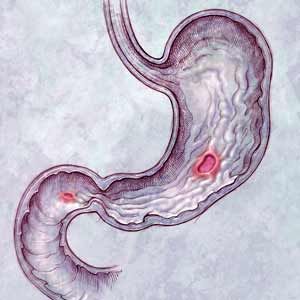
At the bottom of the esophagus is the stomach. Full of digesting enzymes, the stomach breaks down the food you eat. It takes anywhere for 40 minutes to a few hours to digest a meal.
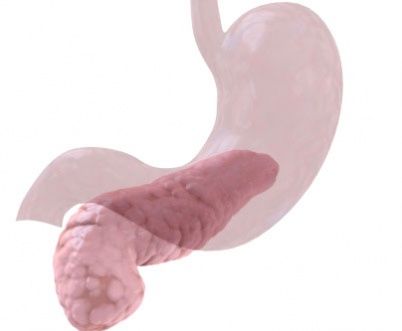
After food comes through the esophagus and stomach, the pancreas provides digestive help in the small intestine. It also produces insulin.
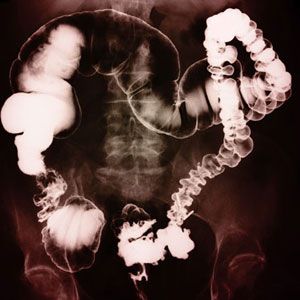
After processed food goes through the intestines, the colon is next. The human colon is about six feet (1.829 meters) long and transports waste from the small intestine to the rectum. The next digestive organ you don't really need.

The gallbladder is a tiny non-vital organ that helps in the digestive process. It also captures and stores bile that is excreted by the liver. A smaller organ is on the next page.
Advertisement
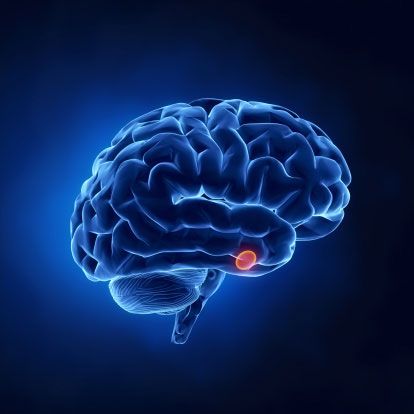
Another tiny, but important gland is the pituitary gland, a pea-sized organ in the brain. It is part of the endocrine system and helps regulate growth, blood pressure and the reproductive organs pictured next.
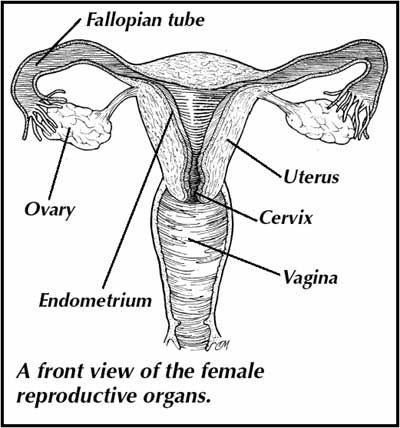
The female reproductive system consists of many components and organs, such as ovaries, fallopian tubes, the uterus and vagina, all which work together to nourish and birth a baby.
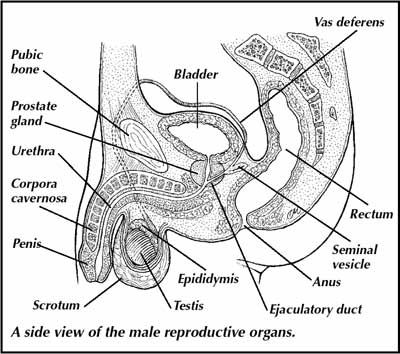
The male reproductive system also consists of those structures designed to create life. Male sex organs include the testes, vas deferens, seminal vesicles, penis and the organ on the next page.
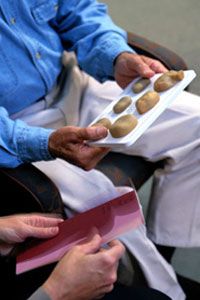
The prostate is a male reproductive organ that is prone to becoming enlarged, and should normally only be slightly bigger than a walnut. The organ is located under the bladder in men and secretes a fluid that makes up semen.
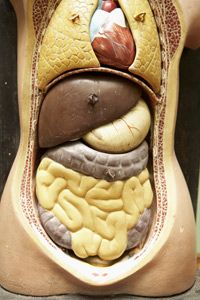
Whether big or small, the internal organs are precisely spaced in the body and keep it functioning. To learn more about the different body systems and organs, see the Human Body Channel and test your knowledge with the Human Body Quiz.
Advertisement